Introduction
Why Do Pigeons Bob Their Head: Pigeons, those ubiquitous birds found in cities and towns worldwide, have a peculiar and often comical habit that has intrigued observers for generations, they bob their heads as they walk. To the casual observer, it might appear as if they’re engaged in a peculiar dance or displaying some mysterious communication method. However, the truth behind this behavior lies in the unique anatomy and sensory mechanisms of these birds, offering a captivating glimpse into the adaptations that have allowed them to thrive in urban environments.
We delve into the reasons behind this distinctive head-bobbing habit and uncover the remarkable insights it provides into the pigeon’s world. Pigeons, scientifically known as Columba Livia, are remarkable creatures whose peculiar head-bobbing behavior is just one aspect of their adaptation to urban life. These birds have coexisted with humans for centuries, and their head-bobbing has long been a subject of curiosity and scientific study. One of the primary reasons pigeons bob their heads is related to their unique vision and the way they process visual information.
Pigeons have a highly developed field of vision, with each eye capable of perceiving a wide range of the surroundings. This wide-angle vision allows them to scan their environment for potential threats or sources of food effectively. However, because their eyes are located on the sides of their heads, pigeons lack depth perception. They bob their heads to create a form of stereopsis or 3D vision. By slightly shifting their heads from side to side, they gain a better sense of depth and distance, helping them navigate complex urban landscapes and detect food or predators more accurately.
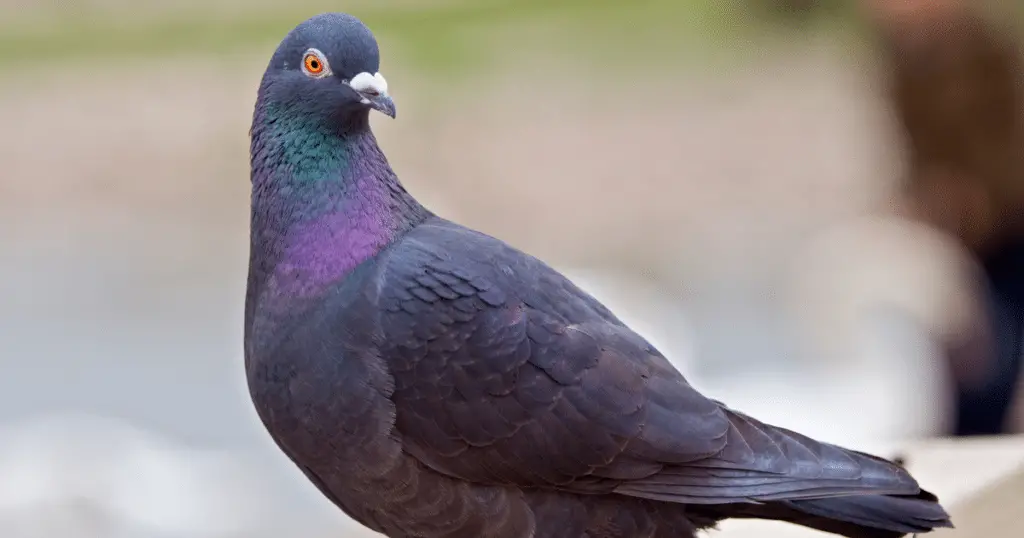
Can pigeons walk without bobbing their heads?
Basically, a pigeon can make sense of its surroundings only if its head is stationary relative to the ground. So as a pigeon walks, it must hold its head still several times per second even as its body moves steadily. The bobbing motion is the head catching up with the body.
Yes, that’s correct. Pigeons rely on keeping their heads stationary relative to the ground to make sense of their surroundings effectively. As they walk or move, they must pause or momentarily hold their heads still multiple times per second to maintain a stable visual reference point. This head-holding behavior is essential for them to accurately assess their environment, detect potential threats, and locate food sources or landmarks.
The characteristic head-bobbing motion you observe in pigeons is, in fact, the result of their heads catching up with the steady motion of their bodies. It allows them to compensate for the absence of stereoscopic vision due to their eyes being positioned on the sides of their heads. This adaptation enables pigeons to effectively navigate various terrains, including the uneven surfaces often encountered in urban environments.
So, while pigeons are capable of walking without bobbing their heads, it’s a fundamental part of their locomotion and sensory perception strategy, ensuring they can interact with their surroundings efficiently.
What does head bobbing mean in birds?
There are a variety of reasons why a bird might bob its head, she says, but the primary reason a bird like a chicken or a pigeon might bob its head while walking seems to be related to gaze stabilization. Head-bobbing acts as the function for birds to secure their gaze into place in a few capacities.
Gaze Stabilization: As the quote you provided mentions, the primary reason for head-bobbing in birds is to stabilize their gaze. Birds often have eyes positioned on the sides of their heads, which provides them with a wide field of vision but limited depth perception. Head-bobbing helps compensate for this lack of depth perception by momentarily holding their heads still to establish a stable visual reference point. This is crucial for accurately assessing their surroundings, especially while walking or foraging.
Enhanced Depth Perception: By momentarily pausing their head’s motion as they walk or move, birds can create a form of stereopsis or 3D vision. This allows them to perceive depth and distance more accurately, which is essential for activities such as pecking at food on the ground or identifying potential threats.
Maintaining Balance: In some cases, head-bobbing can assist birds in maintaining their balance, especially when they are navigating uneven terrain or perching on branches. The rhythmic motion may help stabilize their bodies and prevent them from falling.
Communication: In certain bird species, head-bobbing can also have a communicative function. It may be used in courtship displays or as a signal to other members of their species.
Why do pigeons touch their heads on the ground?
The most likely theory is for the same reason that we move our eyes around to stabilize the image of their surroundings while in motion. When a pigeon is walking on a treadmill, so that its environment remains relatively the same, its head does not bob.
The behavior of pigeons and other birds touching their heads to the ground while walking or moving is indeed related to stabilizing their visual perception of the environment. The theory of aligns with the idea that pigeons engage in head movements to maintain a stable visual reference point as they move.
When a pigeon touches its head to the ground briefly while walking, it can be thought of as a way to anchor its visual field and reduce the relative motion between its eyes and the surroundings. This is crucial for maintaining accurate depth perception and a stable view of their environment.
In controlled environments where the surroundings remain relatively static, such as when a pigeon walks on a treadmill, their head-bobbing behavior tends to diminish because there’s less need to stabilize the visual image. In such cases, the bird may adjust its behavior based on the perceived stability of its surroundings.
Are birds happy when they bob their heads?
It seems to be a sign of excitement and pleasure, or to get attention. They also respond with head-bobbing when I wave my hand up and down at them.
Visual Stabilization: Head-bobbing is often related to stabilizing their visual field to better assess their surroundings. It helps them perceive depth and distance more accurately. When you wave your hand, it may trigger a response in the bird to stabilize its visual perception.
Communication: Some birds may use head-bobbing as a form of communication. It can be part of courtship displays, territorial signaling, or even social interactions among birds.
Curiosity: Birds are naturally curious creatures. When they encounter something unusual or new in their environment, they might engage in head movements to investigate and understand better. Your hand movements could be seen as an interesting stimulus, prompting a response.
Alertness: In some cases, head-bobbing may signify alertness. When a bird perceives potential threats or changes in its environment, it may adopt a more vigilant posture, including head movements.
Why is my bird bobbing his head up and down?
Some situations where your parrot may get excited are right before you feed them and play with them. But wait, there’s more. They bob their heads when regurgitating, a type of courtship behavior, and sometimes even when they are really angry.
Excitement and Anticipation: Birds, including parrots, often exhibit head-bobbing when they are excited or anticipating something positive, like being fed or engaging in play. This can be seen as a sign of eagerness or enthusiasm for the upcoming interaction or activity.
Regurgitation: Head-bobbing can also be associated with regurgitation, which is a natural behavior in some birds, particularly during courtship and bonding. In such cases, the bird may regurgitate food as a gesture of affection and may accompany this behavior with head-bobbing.
Courtship Behavior: Head-bobbing is a common component of courtship displays in many bird species. Male birds, including some parrots, may bob their heads to attract a mate or demonstrate their interest in a potential partner. This can be seen as a form of communication during the breeding season.
Expression of Emotions: Birds, like all animals, have a range of emotions, and head-bobbing can be a way for them to express their feelings. While it’s not always easy to discern the exact emotion behind the behavior, it can sometimes indicate excitement, contentment, or even frustration.
Communication and Social Interaction: Head-bobbing can serve as a social signal among birds. It may be a way for your parrot to communicate with you or with other birds in your household. Birds often use body language to convey their intentions and feelings.
Anger or Discomfort: While head-bobbing is often associated with positive emotions, it can also occur in situations of stress, discomfort, or even anger. If your parrot is experiencing something it perceives as threatening or distressing, it may respond with head-bobbing as part of its stress-related behavior.
Why do pigeons scratch their heads?
The real reason for scratching can be to arrange those feathers on the head and neck that cannot be reached by the bills. Birds preen their feathers, spreading fatty secretions obtained from the uropygial or preen gland located somewhere on the rump.
Pigeons, like many other birds, scratch their heads primarily to maintain the cleanliness and health of their feathers. While preening, which involves using their beaks to clean and groom their feathers, pigeons may not be able to reach certain areas on their heads and necks. In these areas, feathers can become dirty, disheveled, or even infested with parasites.
To address this, pigeons use their feet and claws to scratch or rub their heads. This action helps them rearrange and clean the feathers in those hard-to-reach areas. Birds have preen glands, often located near their tails, which produce oily secretions. These secretions are used during preening to condition and waterproof their feathers. By scratching their heads and then spreading these glandular secretions using their beaks, pigeons can ensure that their entire plumage remains clean, well-maintained, and free from parasites.
So, head-scratching in pigeons serves a practical purpose related to feather maintenance and hygiene, helping them keep their plumage in optimal condition for various functions, such as insulation, aerodynamics, and visual displays.
Why do pigeons fight with their wings?
Wood pigeons are known to fiercely defend their territory, and will fight each other to gain access to nesting and roosting locations. Male wood pigeons will typically attempt to drive competitors off by threat displays and pursuit, but will also directly fight, jumping and striking their rival with both wings.
Territorial Defense: Pigeons are known for defending their territory vigorously. They may engage in wing-flapping and physical confrontations to deter intruders, particularly during the breeding season when the competition for nesting sites and resources is intense. These confrontations can serve to establish dominance and protect their territory from rivals.
Mating Competition: Male pigeons often engage in displays of dominance to attract females and establish themselves as suitable mates. Wing-flapping and other aggressive behaviors may be part of their courtship rituals to impress potential partners and gain the upper hand in mating competition.
Hierarchy Establishment: In pigeon flocks, there is often a hierarchy or pecking order. Dominant individuals may use wing-flapping and other displays of aggression to assert their dominance over subordinate members of the group. These behaviors help maintain order within the flock and reduce conflicts over resources.
Resource Defense: Pigeons may also use wing-flapping to compete for access to food, water, or other essential resources. Establishing dominance through physical displays can help secure a pigeon’s access to these resources.
Communication: Wing-flapping and other aggressive behaviors can serve as a form of communication among pigeons. They convey messages about dominance, territorial boundaries, and the willingness to engage in physical confrontations.
Why do birds stabilize their heads?
Stabilization of the head in animals with limited capacity to move their eyes is key to maintaining a stable image on the retina. In many birds, including pigeons, a prominent example for the important role of head stabilization is the characteristic head-bobbing behavior observed during walking.
Visual Acuity: Birds have evolved to have keen vision, which is essential for activities such as finding food, navigating their environment, and spotting predators. To maximize visual acuity, it’s important for the image on their retinas to remain stable. When a bird moves its head while walking or flying, the head-bobbing motion momentarily stabilizes the visual scene, allowing for better image processing.
Depth Perception: Birds often need to accurately judge distances and perceive depth, especially when foraging on the ground or in complex environments. Head stabilization, achieved through head-bobbing or other mechanisms, helps birds create a form of stereopsis (3D vision) by providing multiple viewpoints. This enhances their depth perception and allows them to judge distances more accurately.
Compensating for Limited Eye Movement: Many birds have eyes located on the sides of their heads, which provides them with a wide field of vision but limited ability to move their eyes independently. This anatomical constraint means that head movements are necessary for birds to shift their gaze and focus on specific objects or areas of interest.
Reducing Motion Blur: When a bird is in motion, whether it’s walking, flying, or perching, there is the potential for motion blur to occur as the environment moves relative to the bird’s eyes. Head stabilization minimizes this motion blur, ensuring that visual information is clear and consistent.
Survival and Predation: For birds, quick and accurate detection of predators or potential threats is crucial for survival. Head stabilization helps birds maintain a steady gaze, making it easier to spot movements and detect predators in their surroundings.
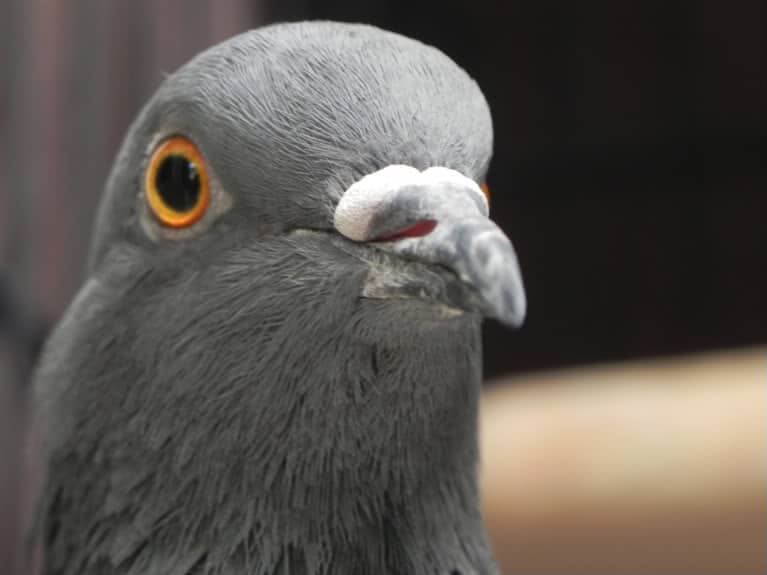
Conclusion
The endearing and enigmatic habit of pigeons bobbing their heads while walking is a testament to the remarkable adaptations that these birds have developed over centuries of coexistence with humans. This behavior serves multiple essential functions in their lives, primarily related to their unique vision and the challenges of navigating complex urban environments. Pigeons, with their wide-angle vision and limited depth perception, employ head bobbing as a clever strategy to enhance their visual perception of depth and distance.
This rhythmic motion allows them to better assess their surroundings, spot potential threats, and locate food sources with improved accuracy. Moreover, the head-bobbing motion helps stabilize their visual world, especially when foraging on uneven terrain, ensuring that they maintain a steady reference point amidst the dynamic landscape.While pigeons may be a common sight in cities and towns around the world, their intriguing head-bobbing behavior reminds us that even the most familiar creatures can hold captivating secrets about their adaptation and survival strategies.
It serves as a reminder of the fascinating and often surprising ways in which animals adapt to their environments, making the world of nature endlessly intriguing and full of wonder. So, the next time you spot a pigeon bobbing its head, take a moment to appreciate the ingenuity of nature’s design that allows these birds to thrive in our bustling urban landscapes. The rhythmic bobbing of their heads could help them maintain a stable visual reference point in their constantly changing environment.


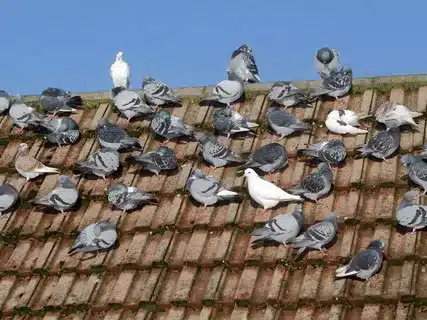
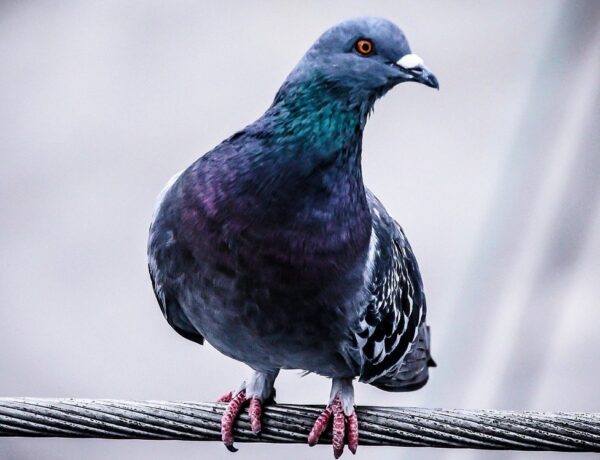
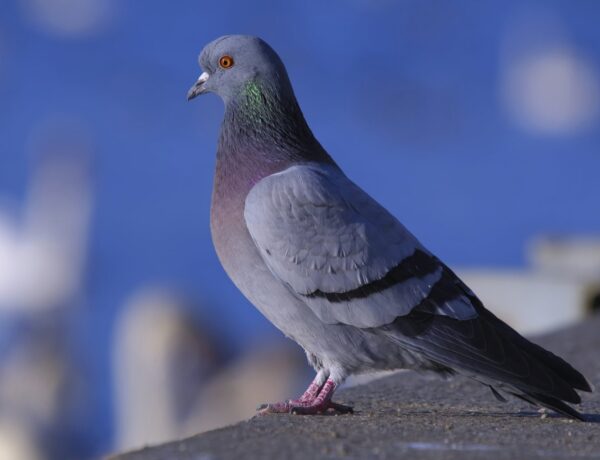
No Comments